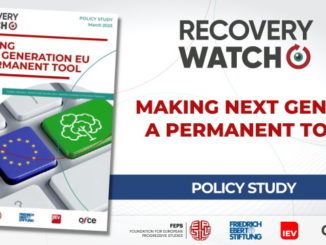
Why – and how – to make Next Generation EU (NGEU) sustainable
Frédéric Allemand, Jérôme Creel, Nicolas Leron, Sandrine Levasseur and Francesco Saraceno The Next Generation EU (NGEU) instrument was created during the pandemic to finance the recovery and, above all, to […]
